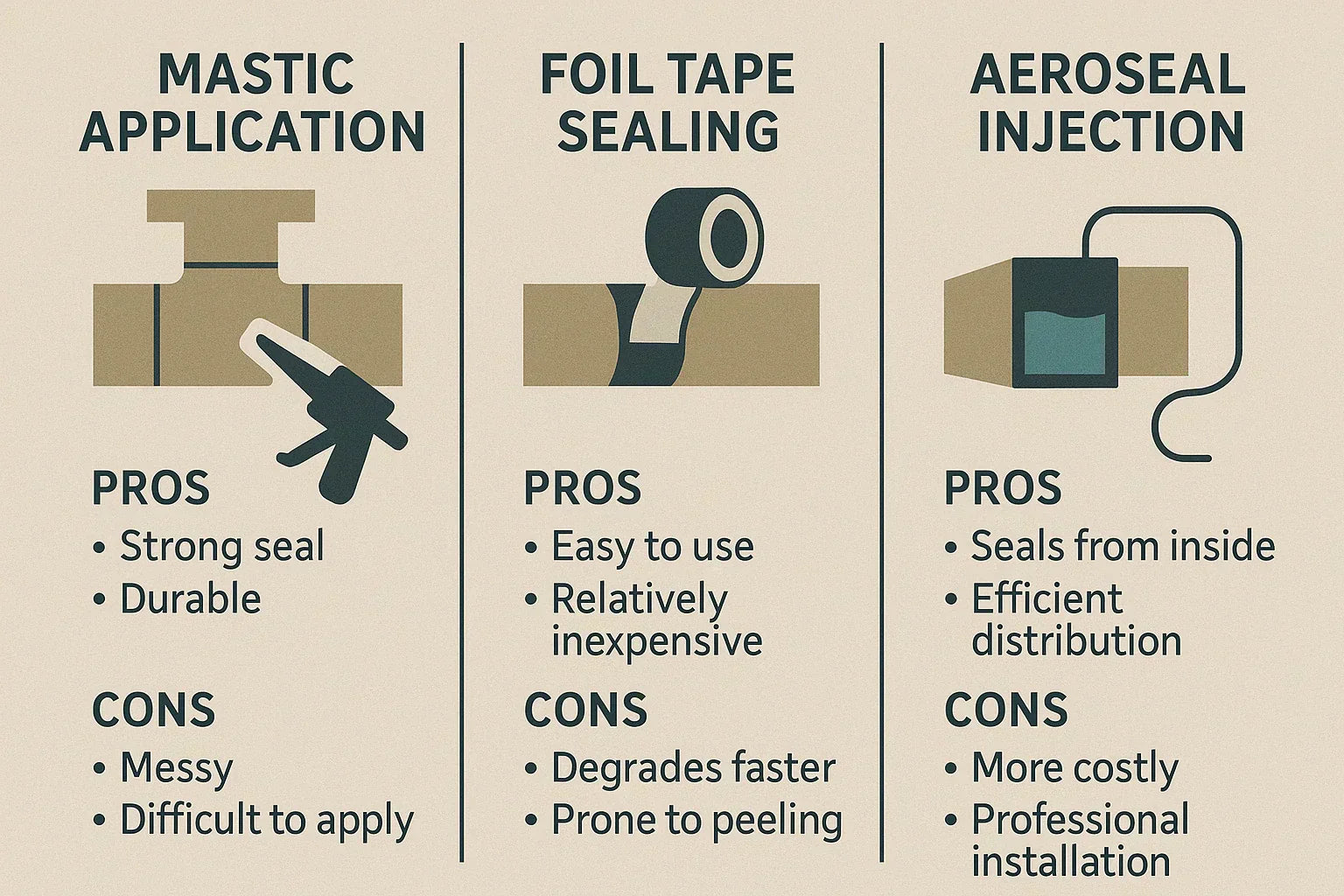When most homeowners think about central AC efficiency, they picture shiny new condenser units, high SEER2 ratings, and smart thermostats. But here’s the truth: your ductwork plays just as big a role in how well your system performs.
If your ducts are leaky, poorly insulated, or the wrong size, your central AC could be wasting 20–30% of its cooling energy before it even reaches your living space — a loss ENERGY STAR warns is common in homes with aging or poorly designed duct systems. That’s like buying premium fuel for your car and spilling a third of it on the driveway.
In this guide, we’ll break down how ductwork affects your AC’s performance, common problems to look for, and what you can do to make sure your ducts aren’t holding your comfort hostage.
Why Ductwork Matters More Than You Think
Your ducts are the arteries of your central AC system. They carry cooled air from your air handler to every room in your home. If they’re not designed, sealed, and insulated correctly, your air conditioner has to work harder — driving up your energy bills and wearing out components faster.
The DOE points out that most homes in the U.S. have duct systems that are “far from perfect,” with significant losses occurring in attics, crawl spaces, and garages. These unconditioned areas act like heat sponges in the summer, making your AC fight an uphill battle.
Common Ductwork Problems That Hurt Efficiency
Leaks and Gaps
Over time, vibration, temperature swings, and even poor installation can cause duct joints to loosen. Every gap is an escape hatch for your cooled air. As ScienceDirect notes, duct sealing is one of the most effective ways to reduce energy loss and improve system performance.
Poor Insulation
If your ducts run through an attic or basement, uninsulated sections can pick up heat in the summer or lose heat in the winter. This not only wastes energy but also causes uneven temperatures in your home.
Wrong-Sized Ducts
Undersized ducts create high static pressure, which forces your blower to work harder and can reduce airflow. Oversized ducts can slow airflow so much that your air doesn’t circulate properly. CED Engineering’s duct sizing guide explains how correct sizing improves comfort, efficiency, and system longevity.
Dirt and Blockages
Dust, pet hair, and debris can accumulate inside ducts, especially if your filter maintenance is spotty. In some cases, pests or collapsed flex ducts can cause partial blockages. The EPA notes that cleaning ducts can help when there’s visible mold growth, pests, or heavy debris buildup.
How Duct Design Impacts AC Performance
Airflow Balance
Balanced airflow means every room gets its fair share of cooled air. If your ducts are unevenly distributed or not balanced with dampers, you’ll end up with hot and cold spots.
Static Pressure and SEER2 Performance
Static pressure is essentially the resistance your blower has to work against to push air through the ducts. AAON explains that excessive static pressure can drop a system’s efficiency well below its SEER2 rating in real-world conditions — meaning you could be paying for a high-efficiency unit without getting the performance you expected.
How to Improve Ductwork for Better Efficiency
Professional Duct Sealing
Sealing ducts with mastic, foil tape (never standard duct tape), or an aerosol sealing method like Aeroseal can dramatically reduce leaks. ENERGY STAR notes that proper duct sealing not only boosts comfort and efficiency but can also improve indoor air quality and reduce energy bills.
Duct Insulation Upgrades
If your ducts run through unconditioned spaces, wrapping them in insulation with the proper R-value for your climate zone can reduce energy losses. This upgrade can pay for itself in a few seasons, especially in hot climates.
Regular Maintenance
Check connections after home renovations, keep filters clean, and inspect ducts periodically for damage or sagging. Even small issues, if left unchecked, can snowball into major efficiency losses.
When to Replace Your Ductwork
Sometimes repairs aren’t enough. If your ducts are poorly designed, heavily damaged, or contaminated with mold that can’t be safely cleaned, replacement may be the smartest move. Pairing new ductwork with a central AC replacement ensures your investment in a high-efficiency unit actually delivers its promised savings.
If you’re already shopping for a new system, check out our Top 10 Central AC Units Compared guide to see which models offer the best performance when paired with properly designed duct systems.
Final Thoughts from Alex
I’ve seen brand-new high-efficiency AC units underperform simply because the ductwork wasn’t up to the job. Your air conditioner can only be as efficient as the network delivering its cool air.
Before you invest in a new unit, make sure your ducts are sealed, insulated, and sized correctly. And if you’re looking to boost your indoor air quality along with efficiency, don’t miss our next guide on Central AC Air Quality Add-Ons: Filters, UV Lights, and Humidifiers Explained.
Alex Lane
Your Home Comfort Advocate







